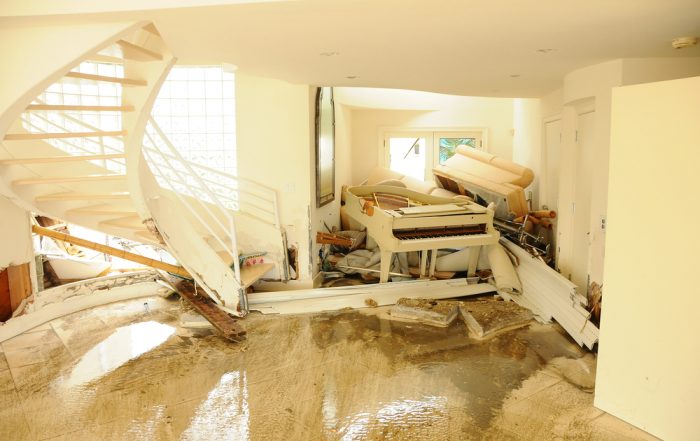Nature and Severity of Damage
The type and extent of the damage do impact the potential for restoration. Different forms of damage, such as water or smoke damage, affect your belongings differently. Generally, if your items sustained mild to moderate damage, you’ll have a better chance of a successful restoration.
Water Damage: When water damage occurs, acting quickly to prevent further damage is crucial. The longer the water sits, the more damage it can cause. Our restoration experts will evaluate the damage and determine the best action to restore the affected items.
Fire Damage: Among the various types of damage, fire damage is often considered the most challenging for contents restoration. This is because fire can cause devastating and extensive destruction, leaving behind various damage that can complicate restoration efforts. Items exposed to fire damage can experience warping, melting, or charring while also being affected by smoke and soot.
Furthermore, water being used to extinguish the fire can damage the items, while the combustion of various materials can cause chemical reactions that will further affect your belongings.
Mold Growth: Mold growth is a common factor affecting content restoration, especially after water damage. Mold can cause health problems and can spread quickly if not addressed promptly.


Materials
The materials that your items are made of can play a pivotal role in how feasible restoration is. For example, certain materials, like metal and glass, have much higher damage resistance, making them much easier to restore. In contrast, certain materials like fabric or wood are much more porous and harder to restore. These materials also tend to absorb more damage and impurities, meaning that the damage they sustain is much harder to reverse.
Age of Material
The age of the material is another important factor to consider. Older materials may be more fragile and require more delicate restoration techniques. For example, an antique piece of furniture often requires more specialized care than a newer piece. Additionally, older materials may have been made with different techniques and materials, which can affect the restoration process.
Timely Response
When it comes to restoring damaged items, time is of the essence. Hence, the swiftness with which you address the damage will make a significant difference to how successful the restoration will be.
To give your items the best chance of being restored, be sure to take immediate and quick action by getting in touch with contents restoration professionals like us. With prompt intervention, you’ll be able to help prevent your item’s condition from worsening while also minimizing further damage.
Get Your Contents Restored by Premiere Restoration
The restorability of your contents hinges on factors including the nature and severity of the damage, material composition, response time, and more. It’s challenging to provide a definitive answer without evaluating your specific item and the damage done, so you need to consult our contents restoration experts as soon as possible.
With Premiere Restoration, you can rest assured that our experts have years of knowledge and experience to give your belongings the best chance at being restored.
